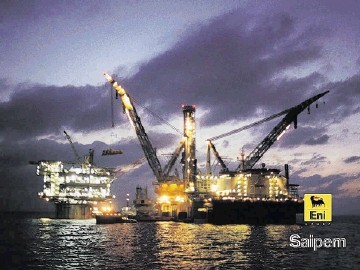
Now the summer’s arrived, we’re at a time when it’s possible to carry out offshore operations and maintenance. So what are ideal conditions?
From an offshore point of view, dangerous seas are sometimes not the tallest waves, but those ordinary swell waves which happen to occur at a regular frequency with a distinct form of height and period.
These wave trains can make a vessel respond and move violently leading to a potentially dangerous situation.
Energy contained in ordinary swell waves can travel huge distances. It is not unusual for swell created by hurricanes in the Caribbean to travel across the Atlantic and into the North Sea.
So, how can these waves be predicted? And how can we make full use of the weather opportunities offshore?
The first step for an offshore operator is to understand and try to quantify the wave environment that they will be working in.
How often are waves of a certain type experienced? How long might they potentially have to wait for the correct weather?
Ideally such intelligence can be incorporated within the design process, whether engineered or strategic.
Will an operation be feasible using existing equipment and barges or will an alternative or mitigating strategy be a better approach?
Analyses drawn from wave models are a valuable source of weather intelligence.
The Met Office hindcast dataset details elements of sea state at a given time, the waves and swell(s); their directions, heights and periods going back a number of decades.
Such data can help identify the best strategy to complete weather sensitive operations in a timely and safe manner.
I remember that in the early days of working in the North Sea, many operations ceased in September ahead of the autumn storms.
Since then, the intelligent use of metocean data to quantify risk has enabled greater use of the “shoulder” seasons to the benefit of the industry.
Technology and science have moved on and, if engaged at an early stage, provide a huge potential benefit to the energy industry, whether it is for developing decommissioning programmes or planning the installation of thousands of wind turbines.
When it comes to forecasting offshore operations, it is very important to have knowledge of the “response amplitude operator” (RAO) of a vessel – a unique measure of a vessel’s reaction to the sea-state.
Once the RAO is known and understood (remembering to account for any vessel modifications and various craft involved in the operations), our wave data can be used to derive the predicted response of the vessel to a particular sea-state and provide a better measure of opportunities to work and potential downtime.
Once operations become live they often demand a higher level of support from the marine forecasters. This support comes in two ways: more detailed forecasts of wave energy, and the support of on-board forecasters.
Wave energy forecasts provide a detailed forecast of wave energy broken into 720 elements; 24 directions and 30 wave periods.
This information is extremely valuable to floating offshore vessels such as semi-submersibles, crane barges and floating production, storage & offloading (FPSO) units that routinely need to consider the impacts of a number of wave directions, heights and periods on their operations.
For example, we provide highly detailed wave energy forecasts to Saipem for its ground-breaking “motion forecasting & monitoring system”.
These wave energy forecasts are combined with the motion characteristics of the Saipem semi-submersible crane vessel to predict how the vessel will react to sea conditions. It was awarded the prestigious 2007 RINA (Royal Institution of Naval Architects) and LRET (Lloyd’s Register Educational Trust) Ship Safety Award.
By using this system, Saipem vessels can increase working operability without compromising personnel or equipment safety.
Realistic motion predictions enable offshore vessel management to significantly reduce the guesswork involved in realising weather window opportunities.
Such data is routinely provided to crane barge companies to help predict and monitor vessel motion.
For weather-sensitive operations, it’s sometimes vital to have a forecaster on-site. The Met Office has teams of forecasters with health and offshore survival qualifications who can work offshore to support critical operations.
Offshore installation contractors understand the value of having a forecaster onboard as part of the project team. Through their detailed understanding of the weather impacts and operational requirements, the onboard forecaster is able to assist decision makers to reduce risk and plan operations.
As I write, there is a Met Office forecaster onboard a heavy lift vessel in the North Sea providing advice for weather sensitive operations.
He will be analysing the weather, checking on wave buoy data for changes in the winds, ensuring the construction team are well briefed on the weather and wave regime and how it is expected to impact on operations. He will be scrutinising the data – keeping an eye out for those “dangerous” small waves.
Recommended for you
